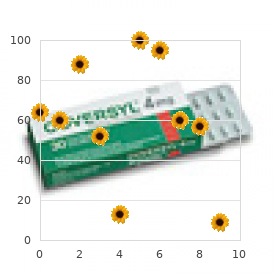"100 mg viagra jelly, erectile dysfunction supplements".
By: K. Ketil, M.A.S., M.D.
Associate Professor, University of Cincinnati College of Medicine
Buy viagra jelly uk
If a lustful person is described as venial, the reference is to the planet, and ancient Roman goddess, Venus. A lunatic is someone who has fallen under the influence of the moon, or the Roman goddess personifying the moon (sometimes identified with Diana). A person who studies the martial arts is engaged in a practice under the influence of the planet, and Roman god, Mars. When describe a magnanimous person as jovial, we are making reference to the planet, and Roman god, Jupiter. Theodore Roszak (courtesy Thinking Allowed Productions) the social critic and historian, Theodore Roszak, in attempting to understand the persistence of astrology, writes: the essential teaching of astrology, reaching back to the ancient worship of the stars, was that of spiritual communion between the human and the heavenly. The modern fascination with astrology even in its crudest forms stems from a growing nostalgia for that older, more unified sense of nature in which the sun, moon and stars were experienced as a vast network of living consciousness. For a growing number of people, the rich imagery of these old traditions has become a more inspiration way of talking about emotions, values, motivations and goals than conventional psychiatry. The astrological universe is, after all, the universe of Greco-Roman myth, of Dante, Chaucer, Shakespeare, Milton, Blake. In 1975, at the time of the original publication of the Roots of Consciousness, over 180 leading scientists including eighteen Nobel Prize winners signed a public letter proclaiming that astrology made invalid and unsupportable scientific claims. Apparently the effort did little to stem the "rising tide of irrationality" which is the bane of those who proclaim themselves to be "skeptics. The inappropriateness of such learned scientists attempting to combat astrology by using the weight of their academic reputations has been criticized by the eminent philosopher of science, Paul Feyerabend. Feyerabend suggests that the fifteenth century Roman Catholic Church made a more cogent argument against witchcraft (in the classic Malleus Malificarium) than the skeptics were able to make against the underlying principles of astrology. He poses an interesting rhetorical question: "Why 186 signatures if one has arguments? Feyerabend sums up his position very eloquently: Modern astrology is in many respects similar to early mediaeval astronomy: it inherited interesting and profound ideas, but it distorted them, and replaced them by caricatures more adapted to the limited understanding of its practitioners. The caricatures are not used for research; there is no attempt to proceed into new domains and to enlarge our knowledge of extra-terrestrial influences; they simply serve as a reservoir of naive rules and phrases suited to impress the ignorant. They do not criticize the air of stagnation that has been permitted to obscure the basic assumptions of astrology, they criticize these basic assumptions themselves and in the process turn their own subjects into caricatures. It is interesting to see how closely both parties approach in other in ignorance, conceit and the wish for easy power over minds. If we can sort out the valid threads from the superstition in the fabric of astrology, perhaps we will discover potentially useful clues to understanding the nature of consciousness itself.
100 mg viagra jelly
Associated Features Supporting Diagnosis When sleepiness is severe, automatic behaviors may occur, with the individual continuing his or her activities in a semi-automatic, hazelike fashion without memory or conscious? ness. Approximately 20%-60% of individuals experience vivid hypnagogic hallucinations before or upon falling asleep or hypnopompic hallucinations just after awakening. These hallucinations are distinct from the less vivid, nonhallucinatory dreamlike mentation at sleep onset that occurs in normal sleepers. Approximately 20%-60% of indi? viduals experience sleep paralysis upon falling asleep or awakening, leaving them awake but unable to move or speak. However, many normal sleepers also report sleep paralysis, especially with stress or sleep deprivation. Nocturnal sleep disruption with frequent long or short awakenings is common and can be disabling. Individuals may appear sleepy or fall asleep in the waiting area or during clinical ex? amination. During cataplexy, individuals may slump in a chair and have slurred speech or drooping eyelids. If the clinician has time to check reflexes during cataplexy (most attacks are less than 10seconds), reflexes are abolished?an important finding distinguishing gen? uine cataplexy from conversion disorder. Development and Course Onset is typically in children and adolescents/young adults but rarely in older adults. Severity is highest when onset is abrupt in children, and then decreases with age or with treatment, so that symptoms such as cataplexy can oc? casionally disappear. Abrupt onset in young, prepubescent children can be associated with obesity and premature puberty, a phenotype more frequently observed since 2009. Onset in adults is often unclear, with some individuals reporting having had excessive sleepiness since birth. In 90% of cases, the first symptom to manifest is sleepiness or increased sleep, followed by cataplexy (within 1 year in 50% of cases, within 3 years in 85%). Excessive sleep rapidly progresses to an inability to stay awake during the day, and to maintain good sleep at night, without a clear increase in total 24-hour sleep needs. Sleep paralysis usually develops around puberty in children with prepubertal onset. Exacerbations of symptoms suggest lack of compliance with medications or devel? opment of a concurrent sleep disorder, notably sleep apnea. Young children and adolescents with narcolepsy often develop aggression or behav? ioral problems secondary to sleepiness and/or nighttime sleep disruption.

Viagra jelly 100 mg with amex
Negative symptom reduction was demonstrated regardless of treatment group, with no significant between-group differences. There is further Level I evidence published guidelines from the National Institute for Clinical supporting family interventions (specifically behavioural parent Excellence (Attention deficit hyperactivity disorder: Diagnosis and management, 2018). Furthermore, within-group analysis for the same period indicated that combined interventions (medium to large effect size) may be more effective than behaviour therapy or community care alone (small to medium effect size). Treatment effects were also found for child social skills (medium effect size), conduct problems, and academic performance (small effect sizes). Behavioural therapies were effective on measures of parenting quality (medium effect size), and parenting self-concept (small to medium effect size). The program consisted of seven 1-hour weekly sessions that were attended by the child, a playmate, and parents. In subsequent weeks, edited video footage of the play sessions was shown to the children and parents, and both positive and negative behaviours were identified and discussed. After the waitlist group received the same treatment, within-group analysis of the combined data indicated that the play-based intervention significantly improved social play skills from to pre to post-treatment, and from pretreatment to follow-up (large effect sizes). Many of the included studies combined psychoeducation with problem-solving strategies or training in communication/assertiveness. Qualitative analysis was conducted on seven articles published between 1980 and 2010. In the current review, there was insufficient evidence interventions (specifically parent training interventions) to treat to indicate that any of the remaining interventions were effective. No studies indicated significant increases in conduct problems during follow-up periods, which was considered a successful outcome for problems of this nature. The intervention consisted of eight modules focusing on the acquisition and use of 17 positive parenting skills such as time out? and descriptive praise. Central to the program was an emphasis on parents? self regulation, agency, and self-efficacy. Family members attended a variety of session types, including parent training, parent-only, and adolescent-only sessions. These reductions continued to be significant at both follow-up time points, with small to medium effect sizes. No treatment effects were found for the equivalent teacher reports of externalising problems. Treatment consisted of three 30-minute sessions of individual therapy and one 45-minute group therapy session per week. Additional elements included parent counselling, occupational therapy, and weekly ward rounds. There was a significant reduction in overall behavioural difficulties for the treatment group in comparison with controls (small effect).

Buy discount viagra jelly 100mg
Nuclear safety is assumed and is not explicitly emphasized in staff interactions and site communications. Processes and procedures do not support strong performance following management changes. Senior managers are not involved in operations and do not exercise accountability or do not follow up. Self-assessment processes, such as management observation programs, do not find problems or do not address them; or the results are not acted on in time to make a difference. Handbook of Human Performance Technology: Improving Individual and Organizational Performance Worldwide, 1999, p. Stream Analysis, A Powerful Way to Diagnose and Manage Organizational Change, 1987, p. Stream Analysis, A Powerful Way to Diagnose and Manage Organizational Change, 1987, pp. Entergy is a New Orleans based utility that provides electrical power to nearly three million customers in Arkansas, Louisiana, Mississippi and Texas. Included among the 14 published books to his credit are those that deal heavily with organizational culture: Organizational psychology, Organizational Culture and Leadership and the Corporate Culture Survival Guide. Over time, this pattern of shared assumptions has worked well enough to be considered valid and, therefore, to be taught to new members as the correct way you perceive, think, and feel in relation to those problems. Schein suggests that the simplest way of thinking about organizational culture is to liken it to personality and character in the individual. As we grow up we learn certain ways of behaving, certain beliefs and certain values that enable us to adapt to the external realities that face us and give us some sense of identity and integration. As organizations grow and succeed, they undergo the same kind of learning process. It is the past history of success that makes cultural beliefs and values so strong. As organizations grow and age they also develop sub-units, and the learning process described here occurs in these sub-units as well since 1 they have different tasks and different issues of internal integration. Schein suggests that organizational culture can be considered in three layers as shown in the following graphic. At the first and most cursory level are artifacts (organizational attributes) that can be seen, felt, and heard by the uninitiated observer. Included here are facilities, offices, furnishings, visible awards and recognition, the way its members dress, and how each person visibly interacts with each other and with organizational outsiders. Here, company slogans, mission statements, and other operational creeds are often expressed, and local and personal values are widely expressed within the organization. These are the elements of culture that are unseen and not cognitively identified in every day interactions between organizational members. Additionally, these are the elements of culture which are often taboo to discuss inside the organization. Many of these unspoken rules? exist without the conscious knowledge of the membership.
Buy viagra jelly uk. Top 10 Homeopathic Medicines to get rid of Erectile Dysfunction.

